 Your new post is loading...
 Your new post is loading...
In June 2015, a new, hyperspecific website named Van Winkle’s went live. It was billed as an online destination for “all aspects of sleep and various nocturnal adventures” by its editorial director, Elizabeth Spiers, formerly an editor at Gawker and the Observer. In its first week, the site’s pieces included a listicle about dream sequence clichés and a 2,800-word feature on the rise of benzodiazepine prescriptions. Its editor-in-chief, Jeff Koyen, heralded it as “the first editorial venture of its kind.” What he meant by that had as much to do with its niche subject matter as it did its funding source: Van Winkle’s was not a traditionally independent journalistic venture, but the latest product of mattress startup Casper.
“We have a long-term vision for Casper to become the dedicated brand for all things sleep, and part of owning that category is owning the best content related to it,” Casper CEO Philip Krim told The Wall Street Journal at the time, speaking pure startup. He later added: “The mandate is to create awesome content and that’s it.”
I wrote a juicy ebook titled Master the Five Pillars of Power Publishing for the startup PowerPost and really want to share it with you. The publication actually cites two authors because the many ideas presented in it come from the sharp mind of Paul Shirer, the co-founder and CTO at PowerPost. Paul agreed to an interview with me to help shed light on how brands must address the new demands of publishing online at scale. Here’s that interview, followed by an edited transcript if you’re rather read....
Alec Baldwin has been killing it as President Donald Trump on Saturday Night Live.
iPhone ads are about to get a lot funnier.
Apple is reportedly planning to inject some much-needed humor into a few of its upcoming commercials after striking a deal with NBC that will see the team behind Saturday Night Live write a few ads for the iPhone-maker.
The partnership between Apple and NBC will result in a series of commercials slated to appear during Saturday Night Live in a couple of weeks, according to Variety. SNL also scored a deal with Verizon that will result in two ad spots being shown on April 8 and April 15.
John Oliver may have called it "repurposed bovine waste," but it appears as though native advertising isn't going away anytime soon. In fact, a new eMarketer study says that native digital display ad spending in the U.S. will grow 36.2% this year to reach $22.09 billion.
And why not? As marketing opportunities continue to splinter across a myriad of platforms and channels, at the same time as traditional interruptive ad intervals are ever avoided like a consumerist plague, brands need to find a way to get their messages across in ways we might actually want to see it. Back in 2014, The New York Times' executive vice president of advertising Meredith Levien said readers were spending roughly the same amount of time on advertiser-sponsored posts as on news stories, and the company sold upwards of $18 million worth of native ads that year. It's T Brand Studio continues to roll out some of the best examples of the ad genre, most notably still is the 2014 interactive piece "Women Inmates," a detailed look at incarceration of women sponsored by...you guessed it... Netflix for Orange is the New Black....
Mobile advertising has grown faster than any other medium in the last four years and is now a significant proportion of online advertising revenue. Initially, it struggled to match the success of mobile app usage and consumer spending. Early mobile advertising formats such as banners have been borrowed from other online media rather than built to best exploit the very different mobile medium. While older formats may have been relatively easy to implement at scale, they have not been built to address the challenges and take advantage of the opportunities that mobile provides. Third party in-app native will continue to grow, at an annual average rate of 70.7% While first party in-app native will continue to be the largest revenue driver, third party in-app native will continue to grow, at an annual average rate of 70.7% and will account for 10.6% of all mobile display advertising at $8.9bn by 2020. However, the paths to adoption of native advertising vary for different types of mobile publishers. A flexible approach which puts the user experience at the heart of the advertising strategy is crucial for the success of native....
The nonprofit Online Trust Alliance (OTA) on Wednesday conducted a study that found 71% of native ads on top media sites fail to offer adequate labeling, transparency, and complete consumer disclosure.
This is a blow to the native ad/branded content business and should be a wake-up call for publishers and content studios.
The study, an analysis of native ads on the top 100 news websites, found that 71% earned failing scores for disclosures, delineation, and discoverability. The bottom line: The sites didn’t offer consumers the ability to easily discern pure editorial from ads.
As most readers of this column know, native advertising refers to Web site content that’s funded and produced outside the publisher’s editorial review or influence, yet is designed to appear similar to editorial on that site. As the OTA mentions, “this illustrates the tension -- paid for and controlled separately, but presented in a way to appear as editorial. The potential for audience confusion or misinterpretation is obvious, and the rapid rise in the deployment of native has already prompted concerns from advocates, media and regulators.”...
“While the industry looks at native advertising as the holy grail to drive new revenues, they are failing to address the long-term issue. With 71% of native ads failing to pass the consumer transparency acid test, this report should be a wake-up call to the industry. Inaction is not an option. Conversely, providing these concrete examples and recommendations helps advertisers, networks and publishers in moving forward,” Craig Spiezle, executive director at the Online Trust Alliance, told Native Insider via email.
Every publisher today wants to wean themselves off display advertising. For mid-sized publishers relying on banners won’t cut it. Slate has made this is a priority, and it now says native ads are almost half of its total revenue.
The online politics and culture publication accomplished this with putting native at the center of its sales strategy rather than treating it as an add-on. Advertising supplies 90 percent of revenue, and native is half of that. Display and podcast advertising still accounts for the other half, although Slate expects display dollars to move towards programmatic, following the industry shift. (The remaining 10 percent comes from other sources like the Slate Plus membership program.)
To prioritize native, Slate hired or retrained its 10-person sales team. Slate Custom, the custom ad creation unit, brought in a new staff under Jim Lehnhoff, the former head of Gawker Media’s content strategy. The 13-person custom unit now focuses on making native ads that are closer to Slate’s editorial DNA of smart commentary. Slate also got more aggressive about buying off-site distribution for the ads, for clients like Jaguar and Chase....
Like most news publications, the 14 organizations that participated in a recent study of native advertising label the content to distinguish it from their independent editorial content. They said they were well aware of the need to maintain audience trust in the crowded news and information market.
However, in general, the use of the same storytelling conventions and formats as news in sponsored content has prompted user confusion and drawn the attention of the Federal Trade Commission.
The 14 publications that participated in "The Rise of Sponsored Content in Digital News Publications," a study I produced for the Tow-Knight Center for Entrepreneurial Journalism at City University of New York, maintained that native ads done well aren’t necessarily deceptive or even unwelcome. The key they said, is to provide engaging content that is relevant to the audience and to generally avoid making direct sales pitches.
“I don’t think anybody objects to native advertising. People just object to bad advertising,” said Sebastian Tomich, Senior Vice President Advertising & Innovation at The New York Times. “It comes down to quality, user experience and quality.”...
Most online publishers use some form of native advertising — ads that look like news stories — to grow revenue. It is accepted practice to declare that this content is sponsored by a company, so that readers can differentiate between what is and is not news. However, the way in which many publishers declare these ads could be "complicit with deception," according to a new study by Bart Wojdynski, director of the digital media, attention, and cognition lab at the University of Georgia.Wojdynski and Nathaniel J. Evans, assistant professor in advertising at the same university, led the study, which found that 60% of readers did not notice the sponsor disclosure label placed at the top of sponsored articles. It also showed that readers are seven times more likely to recognize the labels that use some form of the words "advertising" or “sponsored,” than those which use more vague phrases like “brand voice” or “presented by.” Overall, only 20% of people in the study were aware that they were reading advertising, rather than objective, editorial content....
Therein lies the problem: native advertising is more effective because it masquerades as actual content. But it’s illegal to pass advertising messages off as editorial content. The Advertising Standards Authority in the United Kingdom, for instance, banned a native YouTube ad sponsored by Oreo that featured two well known video bloggers because the agency felt it was not clearly identified as marketing communication.
Stateside, the Federal Trade Commission (“FTC”) has long waged war on false advertising—marketing or advertising communications that tend to mislead consumers. Recently, the FTC issued an “enforcement policy statement on deceptively formatted advertisements” giving advertisers and publishers alike a heads up: deceptive native ads will not be tolerated.
So how can your brand capitalize on native advertising without breaking the law? The FTC offers some insight in their guide, “Native Advertising: A Guide for Businesses.”...
Upworthy said that according to NewsWhip — which measures how content from a variety of media sites performs on social networks such as Twitter and Facebook — the site’s sponsored content performed 38 times better than the industry standard for social interactions involving content at the top 25 social publishers.
"Half the money I spend on advertising is wasted. The problem is I'm not sure which half." ~ John Wanamaker, Philadelphia department store magnate
It would appear Wanamaker’s lament, repeated by many who came after him, will finally be a thing of the past. One of the grand promises of the Internet was to make advertising more efficient. To a large extent it has, but not like what’s to come for big brands. I learned that first hand last month when we didn’t meet a marketer’s unstated expectation that 100% of its display ads on Forbes.com would be in view for readers to see.
Until recently, that wasn’t a standard contractual obligation. Then, the marketer told us it had monitored in-view rates with new ad technology. The industry calls it 100% ad viewability, and compliance presents daunting challenges for every publisher.
For journalists asking why they should care, it’s simple: the news business is about to dramatically change — again.
That’s actually a good thing. Journalism must adapt – and it has — as digital publishing and social media continue to democratize the creation, distribution and marketing of content....
Sitting at the intersection of editorial thought leadership and native advertising, sponsored articles have only recently risen to prominence as a tactic worthy of garnering a share of marketing budgets. The novelty of the practice, for brands and publishers alike, means that many transactional aspects are still undefined. Lack of industry-wide advertising standards, confusion surrounding definitions and forms of sponsored content, informal pricing methodologies, and unexplored benefits have all created a haze of disillusion around sponsored articles.
Yet the most common question asked about sponsored articles should actually be the simplest to answer: How much do they cost?
|
Nearly half of millennials (43 percent) have been misled by medical information on the internet. A recent Harris Poll found that people tend to click the first article that comes up in a search, even though such articles are often advertising content aimed at selling medicine or medical devices. When people aren't searching, they are often coming across such misleading content via social media. Of the 20 most-shared articles about cancer on Facebook last year, over half, according to The Independent, contained claims discredited by doctors and health authorities. How does this misinformation make its way into widely circulated articles? Often, it is there on purpose: Content marketing -- corporate advertising disguised as articles, videos and information -- is being systematically manufactured on an industrial scale....
Quaker State and digital media company, Onion, Inc. are continuing their partnership and launching a new video series. The brand first started working with The Onion in 2016 with the launch of six satirical videos poking fun at marketing fads such as commercial jingles and VR technology. The new series of videos focus on two pseudo Quaker State marketing interns trying to come up with the next big idea for the brand. It was developed by Onion Inc.’s creative services division, Onion Labs. “The Interns” will roll out beginning today featuring hidden camera-style footage, says Nancy Salazar, Quaker State brand manager. The series’ eight installments and accompanying social content will run throughout the rest of 2017. ...
In September of 2013, the late David Carr, skeptical of the burgeoning native advertising tactic that was back then “all the rage,” wrote a column titled “Storytelling Ads May Be Journalism’s New Peril.” Three months later, the Times jumped into the fray. Today the company boasts a fully-fledged content marketing arm, T Brand Studio. Adam Aston, vice president and executive editorial director of the Studio, said when it was first launched, there was a sense of anxiety among the Times’ newsroom, as well as advertisers, that the content they created wouldn’t be up to par with its editorial content. “We were really mindful from inception to approach it as fact-first, narrative-first, with a strong story, strong characters,” he said at a recent panel event, hosted by MediaRadar in New York City, about the future of native advertising. “From inception, whether we were making the simplest stories we could three or four years ago, to today, where a lot of what we’re making is a three-ring circus of interactivity, like VR and AR, we’re still driven by the same thought that the story, the quality of the reporting, finding authentic people, much in the way that our newsroom inspires readers – we want to do the same thing.” Here are five tips from the panelists for using native advertising....
TOne talk that interested me regarded native advertising because - in my opinion - native has the potential to deceive audiences more than it provides value. I say this because in a recent study by Grady College, "only 17 out of 242 subjects -- under 8% -- were able to identify native advertising as a paid marketing message." This is a huge problem in the era we live in with trust in the media being at an all-time low. I wanted to know where we are, where we're going and how will things shake out on the way - I asked the native advertising panellists for a view on where we are going.
"Native" advertising is expected to drive 74% of all US display ad revenue by 2021, up from a 56% share in 2016, but Reddit cofounder Alexis Ohanian isn't a fan. Native advertising is paid content that fits a specific publication's style and editorial guidelines. The idea is that unlike standard banner ads — which users can become blind to and easily overlook — people are more likely to engage with content that looks like the rest of the content on a site. Speaking at a small press conference at Web Summit in Lisbon, Portugal last week, Ohanian described native advertising as something "nobody actually reads but everyone has just bought into." Marketers have been fooled into thinking people are reading their native ads, when instead, Ohanian believes they've simply been tricked by "Facebook arbitrage."...
Therefore, content creators and advertisers may find themselves scratching their heads about how to break through the clutter with compelling branded content that attracts an audience and makes them want more. “While there’s no ‘one size fits all’ when it comes to creating impactful branded content, we’ve identified some common themes in our research and content testing that can be used as best practices for making content resonate with audiences,” said Harry Brisson, Director of Lab Research at Nielsen. To better understand how consumers are reacting to this new form of marketing content, Nielsen assessed consumer reactions to more than 100 pieces of branded content and found that a brand’s effectiveness (e.g., how a brand resonates with viewers) is largely affected by the format and environment the message is delivered in. The results of the analysis uncovered three key takeaways that can help brands deliver strong content that resonates with and builds audiences: - Branded content can drive higher brand recall and brand lift than pre-roll - When viewers enjoy content, they view the integrated brands more favorably - Partnering with a publisher can drive ad impact....
Native Insider: Part of the challenge with "native" is that each organization has a different understanding of what it is. For the purposes of the research, what is your definition of native advertising?
Wu: In our study, we defined native advertising as sponsored content, which features content that is similar and consistent with publishers’ content and is often consumed by readers like non-sponsored content. I agree that there are also other types of native advertising, such as sponsored social media posts or sponsored hyperlinks. We focused on sponsored content because it is widely adopted by many news organizations, including very reputable ones like The New York Times.
Native Insider: Your research found that when content was identified as native advertising, readers expressed a lower opinion of the media outlet it was published in. However, the reputation of the company being promoted was not affected. Can you elaborate on this finding?
Wu: I think this was one of the most interesting findings in our study. We originally expected that both companies and media outlets would be negatively influenced. However, the media outlet was the only source that was affected. On one hand, this indicates that readers are not surprised by the sponsored content from a company, since similar covert marketing techniques have been utilized before, such as video news releases....
Gupta sees the market evolving in a bifurcated way: premium native vs. programmatic native. He sees premium native as branded content and maintains that programmatic native is much closer to display advertising. While there’s a lot of excitement around programmatic native from the ad tech community, Gupta takes the contrarian view that native is premium content created by publishers -- and publishers alone. That’s in contrast to programmatic native, which is created by advertisers.
Gupta’s purist view is that premium native is focused on quality content and engagement, while programmatic native is focused on getting an audience at the lowest possible price. Further, “Publishers are starting to see that programmatic native is different than programmatic display,” Gupta says. “They’ve seen how programmatic display has eroded the value of their premium display business.”
Gupta says that while some premium publishers work with Outbrain and Taboola, they’re rethinking working with these partners because of a poor user experience and click bait. In addition, he says that programmatic native doesn’t offer a way to optimize for engagement. Gupta argues that if you’re a marketer and you buy ads on Outbrain and Sharethrough, you don’t know where those ads are going to run....
The underlying reason? Today’s shoppers are skeptic of pure play tactics. They see value in connecting and acquiring rather than reliance on a brand’s library of products. As a result, they are looking for shopping destinations or inspirational sites.
Perhaps that’s why brands are agog over social commerce.
For those unaware, it is the concept of utilizing social networks to increase sales transactions. Actionable marketing expert Heidi Cohen defines it as the maturation and evolution of social media meets shopping....
Native advertising continued showing strong signs of growth in 2015, as more publishers began offering sponsored articles to brands and effective mobile advertising options became more important. In fact, Business Insider Intelligence predicts that overall native advertising revenue growth will reach $21 billion in 2018, up from $7.9 billion in 2015.
The success of native ads -- studies have shown that consumers looked at native ads and original editorial content for the same amount of time -- has attracted brands who are willing to experiment and push the limits of sponsored articles. And in 2015, that's exactly what happened. We reviewed some of the most interesting, engaging, and inspiring native advertising campaigns of 2015. Here are our favorites of the past year....
There’s not much rhyme or reason to pricing and the sponsored article itself may be bundled with other ad unit types from publishers.
One of the challenges we wanted to solve in the study was the pricing dilemma. Why does “ACME Publisher” charge so much more than “John Doe Publisher” and which one is a better deal?
We tracked sponsored content prices against explicit data factors (Domain Authority, Page Authority, AlexaReach, and Facebook, Twitter, and Pinterest followers) to find correlations that help provide clarity and justification for pricing. The ultimate goal of this is to empower marketers and media buyers to budget and negotiate more effectively while gaining a deeper understanding of the sponsored article landscape....
How do readers feel about all of this? Most research suggests that audiences prefer sponsored posts to banner ads, but they also appreciate it less than regular content. If you’ve come across sponsored content before, you’ll probably understand how it can be both confusing and frustrating.
In 2015, as brands continue to pour dollars into these projects, publishers will keep growing their resources and improving their output. Consequently, audiences will begin to realize that content underwritten by brands can be meaningful too.
Let’s look at some publishers that are currently leading the pack in terms of content quality, formatting and design, and reader experience:...
|



 Your new post is loading...
Your new post is loading...



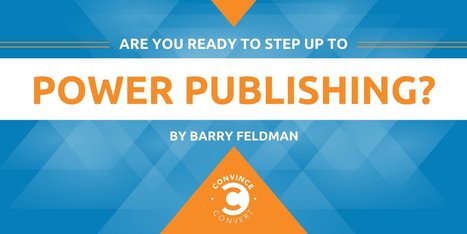
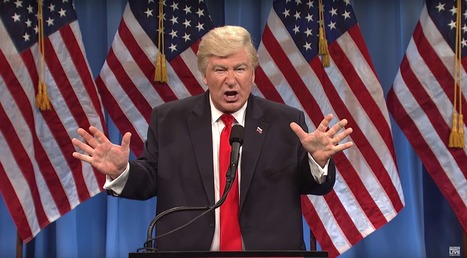
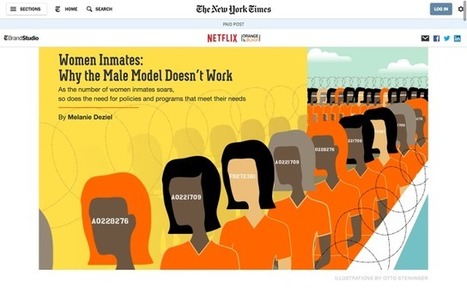

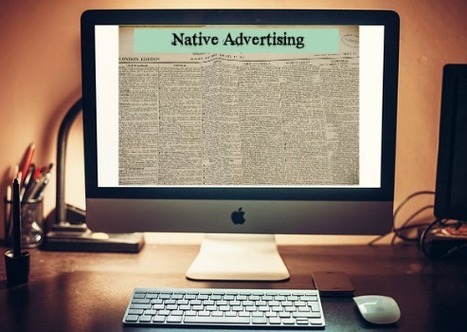




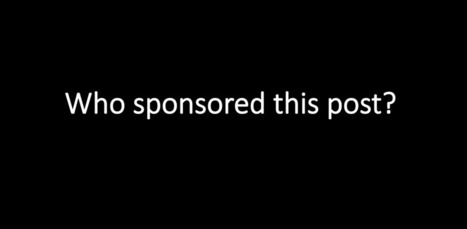
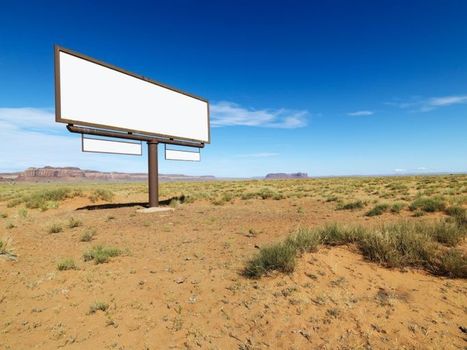



![How Much Should Sponsored Articles Really Cost? [New Data] | Public Relations & Social Marketing Insight | Scoop.it](https://img.scoop.it/Zv0AJvPs8jq3FccTeDc5tDl72eJkfbmt4t8yenImKBVvK0kTmF0xjctABnaLJIm9)

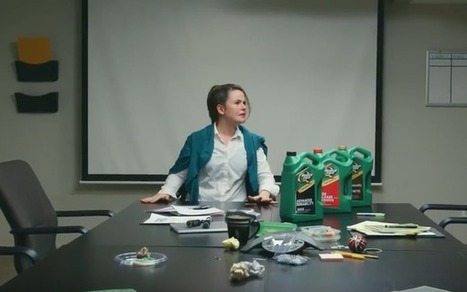
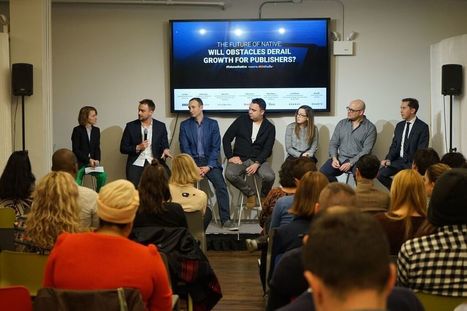
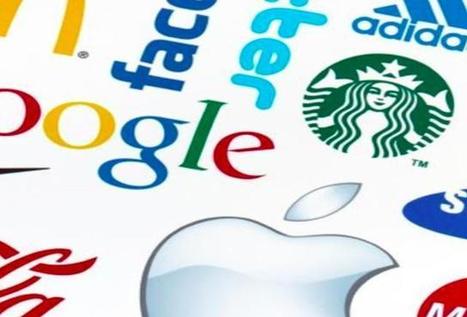


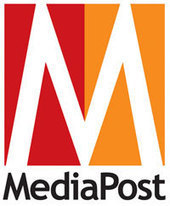





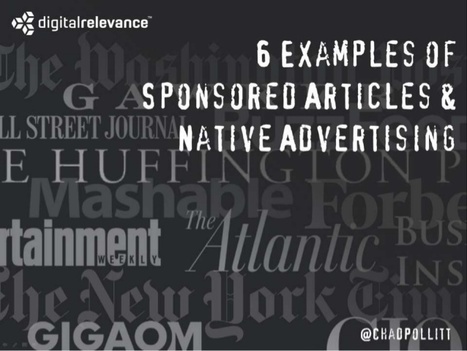
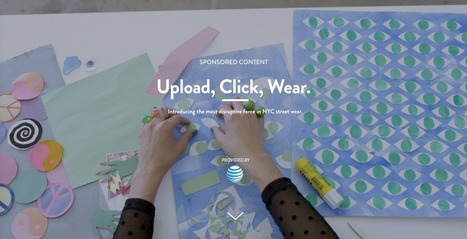





Here's a profile of Van Winkle's "news" and some interesting insight into content marketing and journalism. More recommended reading. 9/10